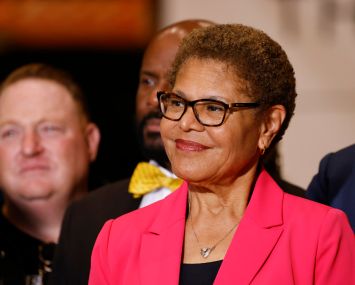NYC Starts Public Review of Citywide Retail and Industrial Zoning Changes
By Rebecca Baird-Remba October 31, 2023 3:14 pm
reprints
The City Planning Commission on Monday kicked off formal public review for Mayor Eric Adams’s suite of commercial zoning changes, dubbed the “City of Yes for Economic Opportunity.”
The zoning revamp aims to rationalize the city’s outdated list of what can be built in certain commercial areas, allow amusements and laboratories in more parts of the city, enable retail on upper floors of buildings and in more residential areas, and permit denser manufacturing properties in some industrial areas.
One notable change is that commercial science labs would be allowed to locate in more commercial areas commonly mapped throughout the city, in addition to the higher density commercial districts where they are already allowed.
The suite of changes will apply citywide and, as part of the nine-month Uniform Land Use Review Process that began Monday, will be considered by each of the city’s 52 local community boards, which have only an advisory role in the process. It will then move to the borough presidents, City Planning and the New York City Council, which is expected to vote on the final text amendment in the spring.
“Just this month, we celebrated a major victory for New York City’s comeback, hitting an all-time total jobs record. But we were clear then that our work was not done, and the ‘City of Yes for Economic Opportunity’ plan will be the next major victory for our city,” Adams said in a statement. “These 18 changes will unlock family-sustaining jobs for our neighbors, sustained and inclusive growth in our communities, and a vibrant future for our city. New York City is back — now, we’re ready for the next step forward.”
The sweeping text amendment would allow for denser industrial buildings than are currently permitted in many manufacturing areas, eliminate parking requirements for new industrial buildings near subways, and allow more kinds of retail and community facilities in some manufacturing zones. Although the amendment creates new kinds of industrial zoning districts, it will not actually map any. The new industrial districts would not be applied to the city’s Industrial Business Zones, which account for about 50 percent of the city’s manufacturing land and are not subject to rezonings because of an agreement negotiated during the Bloomberg administration.
“City of Yes” will also scrap the last piece of the city’s cabaret law, which prohibits dancing in some bars and restaurants, depending on the underlying commercial zoning. It would also eliminate a two-year clock on vacancy for nonconforming retail in residential areas, which currently prohibits a storefront from being reoccupied as retail if it’s been empty for more than two years. Businesses would also be allowed on the same floor as apartments, and even allowed above them in some commercial areas, as long as there are separate entrances for apartment residents and retail tenants.
“For too long, small business owners have had to navigate a byzantine mix of outdated zoning rules that have stymied their growth and led to vacant storefronts in our neighborhoods. ‘City of Yes for Economic Opportunity’ will cut the red tape and provide the flexibility needed for our mom-and-pops, and our neighborhoods, to succeed,” City Planning Director Daniel Garodnick said in a statement. “To have a modern economy that works, we need our zoning to meet the moment, and that’s what this proposal will do. We look forward to a robust public review process as we move towards a more prosperous city.”
The “City of Yes for Economic Opportunity” is one of three zoning text amendments Adams has pitched to modernize the city’s 70-year-old zoning code. Adams also proposed an amendment to spur more residential construction and another to make it easier for building owners to add energy-efficent improvements and install renewable energy sources at their properties.
Rebecca Baird-Remba can be reached at rbairdremba@commercialobserver.com.
Update: This story has been updated to clarify where commercial labs are currently allowed, and to reflect the nature of the industrial zoning changes being proposed.


